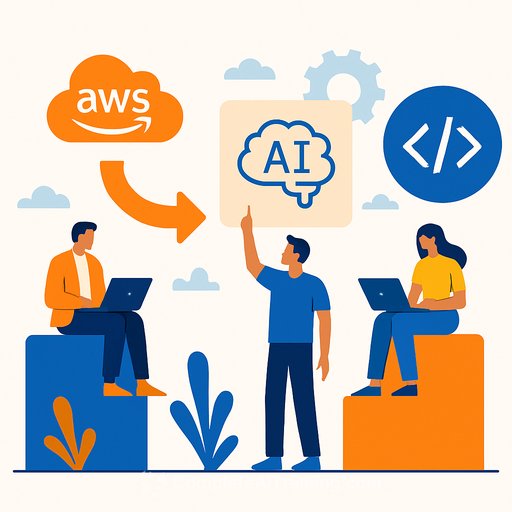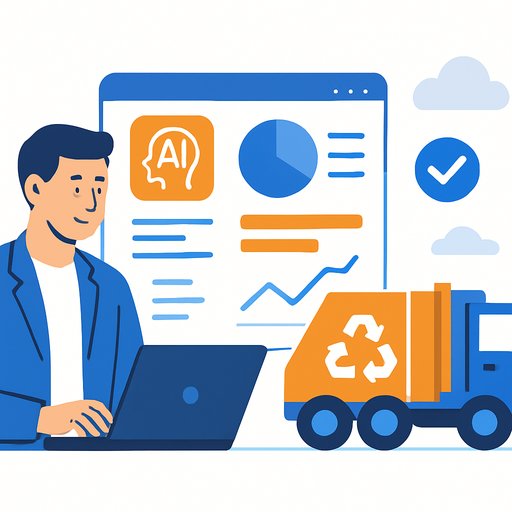AWS pivots from field-heavy selling to developer-led growth: What sales teams should do next
AWS is rebalancing how it sells AI apps. Instead of leaning on big, executive-led deals, it's pushing for organic, developer-led adoption across products like Q Developer and Q Business.
The shift follows weaker grassroots traction for Q Developer against rivals like Cursor and Windsurf. In response, AWS launched Kiro to appeal to self-serve developers and plans a user-led motion for Q Business after upgrading to its internal AI platform, Quick.
Why this shift matters
An internal document reported by Business Insider suggests Q Developer saw wins with senior leaders, but only with heavy sales lift. That's the opposite of early AWS growth, where developers adopted first and enterprises followed.
This mirrors a broader trend: product-led adoption in software. Tools like Slack and Zoom spread from users upward, and AI tools like ChatGPT and Cursor grew through direct use, not long sales cycles.
What AWS is doing now
- Launching Kiro to serve the "grassroots" developer cohort with a self-serve path.
- Moving Q Business toward a user-led model to speed up sales cycles.
- Upgrading to Quick internally and adding enterprise features after user feedback.
- Public stance: all channels matter. AWS says Q Developer usage grew "9x per person" this year and points to products like Bedrock, Connect, and SageMaker as proof of traction.
For context on AWS's AI stack, see Amazon Bedrock. For a benchmark on developer-first coding assistants, see GitHub Copilot.
What this means for sales leaders
- Expect a hybrid motion: self-serve to land, sales to expand. Your team's job shifts from pushing product to accelerating usage where it already exists.
- Pipeline starts in product, not just in meetings. Usage telemetry becomes a primary signal for account prioritization.
- Champion-building beats boardroom-only selling. Developer trust is now a core buying committee input.
- Faster cycles, smaller initial deals. Expansion depends on proof of value inside the customer's workflow.
- Security and governance become the close. Enterprise-ready features unlock procurement at scale.
Sales playbook: turn bottom-up interest into enterprise revenue
- Instrument everything: track active users, weekly actions, seats invited, and team-level retention. Route high-usage accounts to AEs.
- Make the friction low: enable easy trials, clear pricing, and SSO in minutes. Offer a clean path from personal use to team plans.
- Build champions: run office hours, publish quickstart guides, offer code samples, and open a responsive support channel.
- Coach on ROI: quantify time saved per developer and translate to cost and release velocity. Package these into one-page business cases.
- Reduce procurement drag: have security docs, DPA, SOC 2/ISO info, data residency options, and admin controls ready.
- Offer expansion levers: team templates, usage quotas, role-based permissions, and workspace analytics that VPs care about.
- Land where workflows live: integrations with repos, IDEs, chat, and ticketing. Expansion follows daily habit.
- Bundle smartly: pair assistants (Q Developer/Q Business) with platform services (e.g., Bedrock/SageMaker) to anchor larger contracts.
- Price to invite trials: usage-based or tiered plans that make the first win obvious and cheap, with clear value steps up.
- Run win-back vs. rivals: benchmark against Cursor, Windsurf, and Copilot on accuracy, latency, admin controls, and TCO.
Manager checklist
- KPIs: WAU-to-MAU ratio, team activation rate, PQL-to-SQL conversion, seat expansion per account, time-to-first-value, and churn.
- Signals for AE engagement: 10+ active users in 14 days, 3+ teams created, security admin logins, or API usage crossing a set threshold.
- Content to close: security one-pager, ROI calculator, competitive teardown, 30-60-90 rollout plan, and an adoption playbook for team leads.
Handling objections you'll hear
- "We already use Copilot." Focus on integration depth with the customer's stack, governance, and total cost across teams.
- "Developers can use free tools." Show side-by-side quality, compliance, and admin needs at scale; free tools don't pass audits.
- "We'll evaluate later." Offer a time-boxed pilot with success metrics and executive readout scheduled up front.
Bottom line for sellers
AWS is signaling a clear direction: let users adopt first, then let sales scale the value. Your edge comes from reading usage, accelerating activation, and making the enterprise buy easy.
If you're building your AI sales skill set and need structured training by role, explore Complete AI Training: Courses by Job.
Your membership also unlocks:






